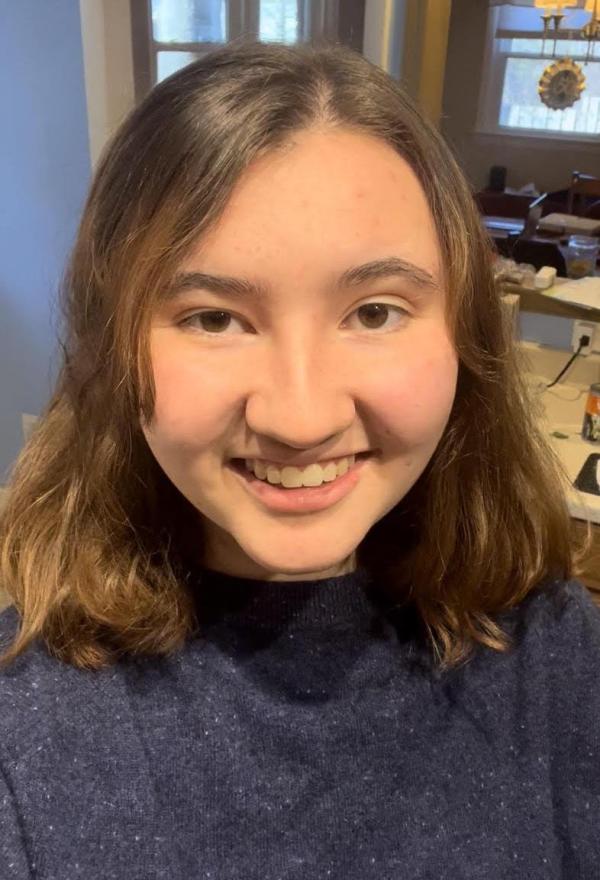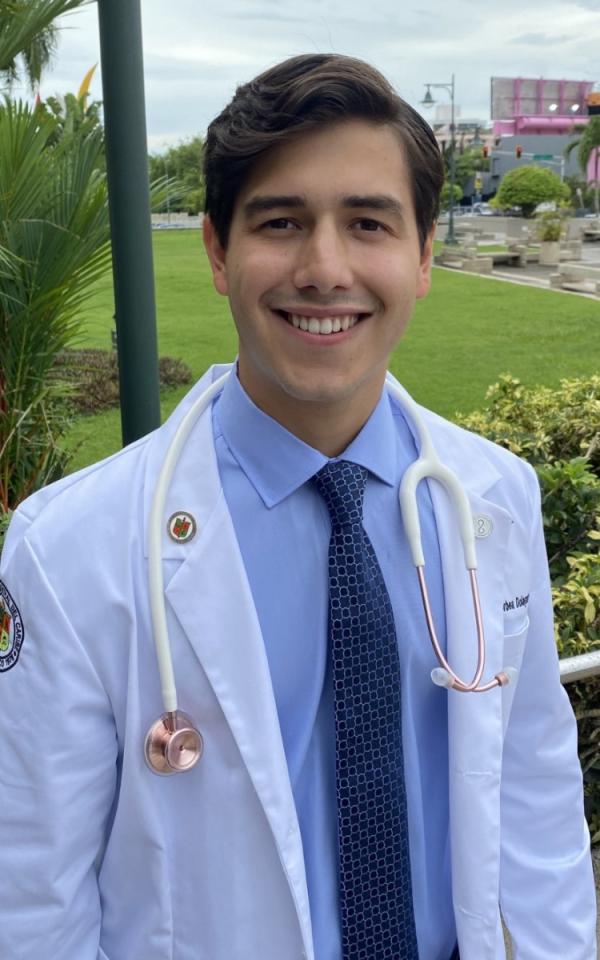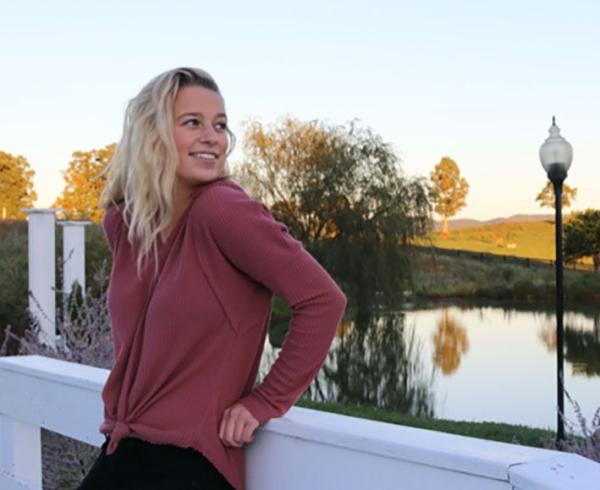Poster Sessions Celebrate Summer Science
Annual Event Brandishes the Next Generation of Clinicians and Scientists
A year after hundreds of high school, undergraduate, and graduate students were only able to participate from afar in NIH’s 2021 Summer Internship Program, IRP researchers were excited to welcome some of the program’s 2022 participants to campus. Regardless of whether they were working in the lab or remotely, these budding scientists received a full-time immersion into the world of IRP science and, surely, learned a great deal from the mentorship of NIH’s many world-renowned researchers.
To celebrate the interns’ hard work, NIH’s Summer Poster Days on August 3 and 4 gave more than 600 of them the opportunity to virtually present posters explaining their projects. With so many bright young men and women displaying the fruits of their scientific labors, it was difficult to select just a handful to highlight in this blog. Read on to learn about how five of NIH’s 2022 summer interns shed light on topics from the microbes living on our skin to the blood-clotting platelets that flow through our veins.
Sarah Bengtson: Sampling Skin Microbes to Predict Eczema Risk

Sarah has been curious about the world of the microscopic since high school, when her involvement in Science Olympiad competitions sparked an interest in microbiology. Between classes at the College of William & Mary in Williamsburg, Virginia, the rising biology and math major scrutinizes soil samples to figure out how bacteria-killing viruses called bacteriophages in the soil affect the community of microbes living in it.
When Sarah began her summer internship in the lab of IRP Lasker Clinical Research Scholar Suchitra Hourigan, M.D., her focus shifted from soil to skin. She has specifically been assisting with a project examining the relationship between skin health and the collection of viruses, bacteria, and other microbes on the skin, known as the skin microbiome.
“I joined Dr. Hourigan’s lab because I think studying the microbiome is a really fascinating way to look at host-microbe interactions and because I wanted to get some experience with clinical research,” Sarah explains.
Using skin samples taken from babies within a week of their birth, Sarah and her labmates have been attempting to establish a connection between the infants’ skin microbiomes and their risk of developing a skin condition called atopic dermatitis, more commonly known as eczema. The team found that babies who were diagnosed with eczema before their third birthdays had noticeably different amounts of certain bacteria and fungi on their skin during their first week of life compared to babies who did not develop the condition, “which was exciting to see in samples taken so long before the disease developed,” Sarah says.
“This project was a big undertaking that a lot of people worked on, and it was really exciting to be involved with it,” she continues. “It was exciting to see the results of the study come together and to see how clinical research works up close.”
Unlike her research experience at her university, Sarah’s time at NIH this summer has given her a taste of what it would be like to work full-time in the lab. On top of that, she has seen first-hand the high level of scientific talent and cutting-edge technology that is characteristic of research in the IRP.
“Getting to see so many dedicated people with access to the resources they need to pursue projects that they’re passionate about has really shown me what science can look like at its best,” she says.
Fun fact: Even before she became interested in studying microorganisms, Sarah had a love of critters much smaller than herself, taking care of five pet frogs when she was growing up.
Andrés Gorbea: Utilizing Urine to Improve Cancer Diagnosis

Andrés doesn’t shy away from new experiences, having left his hometown in Puerto Rico for the much colder climate of New England to attend college at Northeastern University in Boston. After graduating and returning home to Puerto Rico to attend medical school at the Universidad Central del Caribe, he decided to take his first foray into cancer research by spending a summer working in the lab of IRP senior investigator Maria Merino, M.D.
“I am very interested in working with cancer detection and intervention as a future physician,” Andrés says. “I was very excited to learn about translational cancer research and work at a prestigious institution with a distinguished researcher and pathologist like Dr. Merino.”
This summer, Andrés helped catalogue short strands of genetic material called microRNAs whose levels are significantly different in the urine of patients with bladder cancer. Andrés and his colleagues did this by comparing the abundance of many different microRNAs in urine samples collected from patients before and after their bladders were surgically removed to treat their cancers. The researchers then compared the microRNAs in those samples to the microRNAs in the patients’ tumors to determine which microRNAs in the urine samples were coming from the patients’ tumors, as opposed to another source.
In this way, Andrés and his labmates ended up identifying numerous microRNAs that are markedly more or less abundant in urine as a result of bladder cancer. Furthermore, they were able to distinguish particular microRNAs whose levels changed during specific stages of the disease.
“The detection of tumor markers in research is a paramount aspect in learning how tumors produce certain proteins and how some systems are dysregulated in the setting of cancer, and by detecting and learning about these tumor markers, one can develop more efficient mechanisms of diagnosis and treatment,” Andrés explains.
Andrés found it extremely gratifying to come to work every day knowing that his efforts could eventually help doctors detect bladder cancer in the disease’s early stages, when treatment is likely to be more effective. It didn’t hurt, either, that this work was done alongside a supremely knowledge group of IRP scientists.
“The experience of working at NIH was incredible, as I was able to work with a remarkable team of excellent teachers and mentors who taught me how to develop a research project and exposed me to the incredible field of research that is going on at the National Cancer Institute,” Andrés says. “It has been an incredible experience and I am incredibly grateful to the people who took me in and taught me about translational cancer research.”
Fun fact: When Andrés isn’t in class or at home with his head buried in medical textbooks, he takes advantage of the many beaches in his home country. He particularly enjoys playing beach tennis.
Lietsel Jones: Looking Into the Link Between Muscles and the Brain

Like the many other individuals from abroad who work in the IRP, Lietsel did not let distance stop her from taking advantage of what NIH has to offer. Hailing from the island of Sint Maarten in the Caribbean, she took a summer off from her Ph.D. studies at the University of Central Florida to work in the lab of IRP senior investigator Luigi Ferrucci, M.D., Ph.D. Both working in Dr. Ferrucci’s lab and beginning her Ph.D. program in biomedical sciences have been key steps in Lietsel’s transition from designing robots as a biomedical engineering graduate student to studying the brain as an aspiring neuroscientist.
“I could not help but apply to work with some of the leading scientists doing cutting-edge neuroscience and aging research,” Lietsel says.
In Dr. Ferrucci’s lab, Lietsel worked with IRP staff scientist Qu Tian, Ph.D., on a project that explored how the relationship between the brain and age-related muscle loss differs in men and women. It is common for people to lose muscle mass as they age, and that loss can affect their quality of life and ability to complete everyday tasks in their twilight years. However, the rate of muscle loss differs in men and women, much to the consternation of scientists.
“Men tend to experience an accelerated rate of muscle loss compared to women, and we don’t know why,” Lietsel explains.
To shed light on that mystery, Lietsel looked at measurements of male and female participants’ muscle mass and their brains’ levels of ‘gray matter,’ which is made up of the cell bodies of neurons, and ‘white matter,’ made up of the long protrusions from neurons along which electrical signals travel. Her analysis revealed that men who had more gray and white matter in their brains tended to experience less muscle loss as they aged, whereas there was no such relationship in women. This insight could help scientists get closer to creating better-targeted interventions to help men and women retain muscle as they age.
While Lietsel was not able to work on campus this summer, collaborating remotely with her colleagues in Dr. Ferrucci’s lab did little to hinder her. She credits her success to the attitudes of her labmates, who made her feel as if she were right there in the lab with them.
“Since I was a virtual intern, one would expect that it was an isolating experience,” Lietsel says. “On the contrary, the folks at NIH did a wonderful job of making remote interns feel like they were part of the in-person community. Science aside, the community-building was my favorite part of the experience.”
Fun fact: Lietsel is a co-founder of a non-profit organization called Black in Neuro, which aims to increase diversity in the field of neuroscience. “It’s one of my proudest accomplishments,” she says.
Michaella Bono: Investigating Immune Cells in Alzheimer’s Disease

Michaella discovered her passion for science in high school, finding that the subject matter “just came naturally” to her, she says. She nurtured this aptitude by getting involved in research on Alzheimer’s disease and Parkinson’s disease at Virginia Tech, where she is now a senior majoring in experimental neuroscience. When she decided to spend a summer performing research at NIH, she was able to leverage her college experience to land a position studying Alzheimer’s in the lab of IRP Stadtman Investigator Han-Yu Shih, Ph.D.
“I got interested in Alzheimer’s research specifically because of my grandmother, who passed from Alzheimer’s,” Michaella explains. “I don’t want anyone else to have to go through that, and I felt that I could make the best impact on Alzheimer’s care through research.”
Michaella spent her summer comparing the abundance of various types of immune cells in the brains of healthy mice and a mouse model of Alzheimer’s disease. Out of the nine different cell types she examined, only a set of cells known as CD8-positive T cells was present in much higher levels in the brains of the Alzheimer’s mice compared to their healthy counterparts. The finding suggests that those immune cells, which normally kill cancer cells and cells infected by viruses, may contribute to the death of brain cells seen in Alzheimer’s disease.
Michaella relished the opportunity to work on the NIH campus this summer, which allowed her to “be immersed in a research community,” she says. That sense of comradery was her favorite aspect of working in the IRP.
“Being a summer student at NIH has been an incredible experience,” she says. “I have learned so much and grown as a researcher.”
Fun fact: Despite being a member of Gen Z, Michaella says she loves “anything from the 80s, especially Journey!”
Joseph Grech: Finding Out How Fitness Affects Blood-Clotting Cells

After graduating from Michigan State University, Joe spent two years working in the lab of IRP investigator Andrew Johnson, Ph.D., as a postbaccalaureate IRTA fellow. He enjoyed the experience so much that when he began contemplating his first summer break from medical school at Loyola University’s Stritch School of Medicine in Chicago, he quickly decided to return to NIH and pick up where he'd left off.
“Dr. Johnson and I established a strong relationship during my postbac fellowship, and I am really interested in the work going on in his lab,” Joe says. “It was an easy decision for me to return for the summer, and I was happy he took me back!”
As an avid exerciser, Joe feels a personal connection to the research on cardiovascular disease being done in Dr. Johnson’s lab. This summer, he specifically examined how the behavior of blood-clotting cells called platelets differs based on a person’s level of physical fitness. He was specifically interested in how readily platelets form blood clots, a trait known as platelet ‘reactivity,’ because platelets that form blood clots too readily can contribute to cardiovascular disease and heart attacks. Ultimately, Joe and his labmates found that more fit individuals tended to have less reactive platelets, suggesting that their decreased risk for cardiovascular disease might be partially due to the way their platelets function.
“Research on this topic is important to better understand the effects of exercise on the body, which ultimately, many years down the line, might inspire new drug targets or the use of cardiorespiratory fitness levels in a clinical setting to aid in diagnosis and treatment,” Joe says.
Having performed research on a variety of topics at several different institutions in addition to his work in the IRP, Joe has a broad basis for comparison when he describes NIH as a great place to work. While he has now returned to Chicago for his second year of medical school, he may not stay away from NIH for long.
“I absolutely love working at the NIH!” he says. “It was amazing to be back in Dr. Johnson's lab for the summer. I have always felt like his lab atmosphere is tight-knit, and that is something I look for when choosing a research lab. Dr. Johnson is very good about providing opportunities for trainees to lead projects, he's very good about allotting time for one-on-one meetings each week, and he offers great career advice!”
Fun fact: Joe spent the summer of 2017 working in a research lab in Blantyre, Malawi, where he performed research in the field of malaria epidemiology. While he was there, he participated in the annual Mount Mulanje Porters Race, a roughly 25-kilometer race up and down the tallest mountain in Malawi.
Whether working alongside the IRP’s world-renowned scientists in the lab or collaborating with them from elsewhere in the U.S., or even from another country entirely, NIH’s summer interns get a one-of-a-kind glimpse into life as a biomedical researcher. The discoveries they contributed to this summer will not only help push forward our understanding of human health, but also give them a leg up on their journeys to one day become fully-fledged clinicians and scientists themselves.
Subscribe to our weekly newsletter to stay up-to-date on the latest breakthroughs in the NIH Intramural Research Program.
Related Blog Posts
This page was last updated on Wednesday, July 5, 2023
